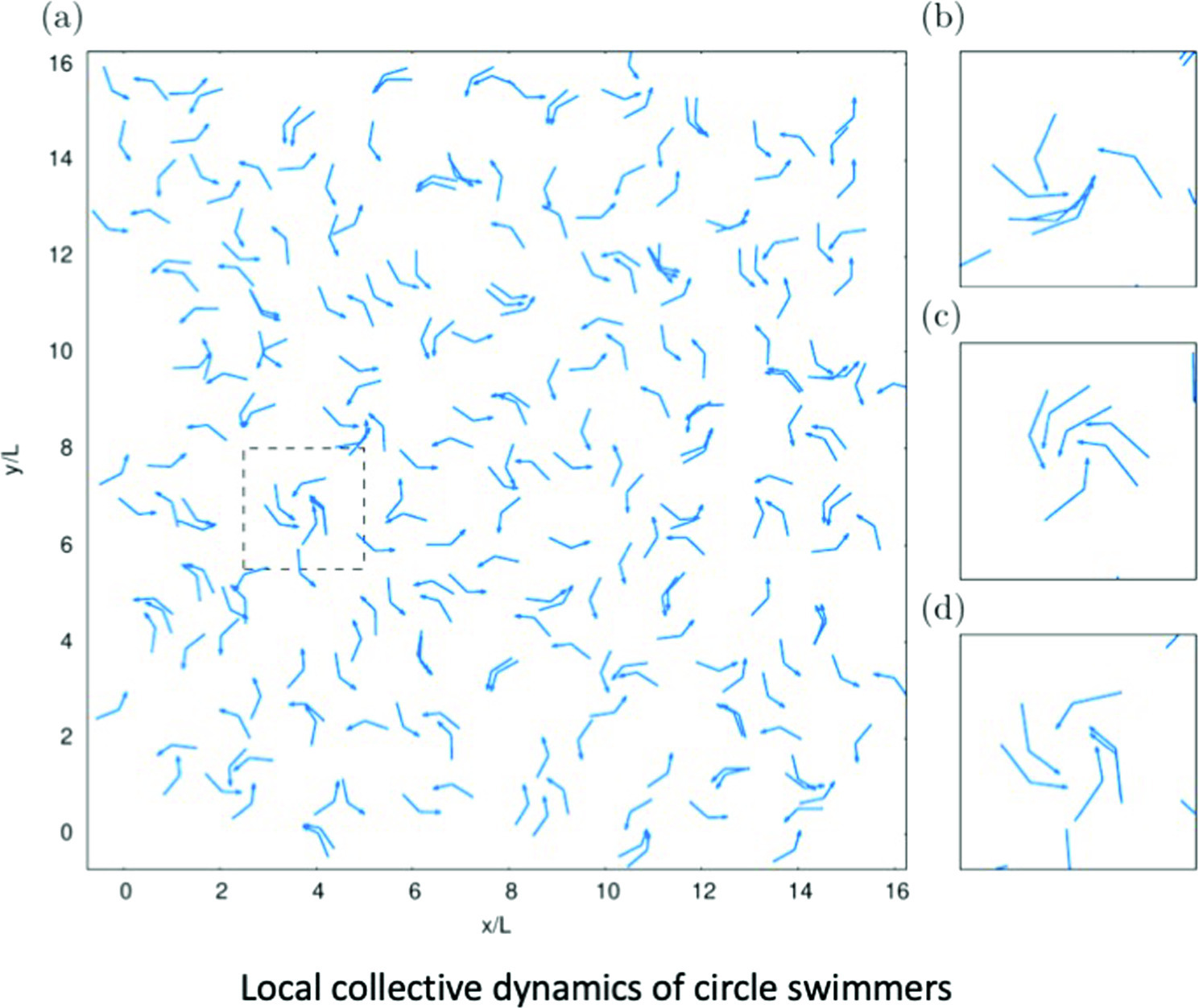https://doi.org/10.1140/epje/s10189-024-00458-z
Regular Article - Living Systems
Modeling straight and circle swimmers: from single swimmer to collective motion
1
Dipartimento di Fisica and INFN, Università degli Studi di Torino, Via P. Giuria 1, 10125, Torino, Italy
2
Istituto dei Sistemi Complessi, CNR, via dei Taurini 19, 00185, Rome, Italy
3
INFN, Sezione di Roma 2 Tor Vergata, Rome, Italy
a
francescomichele.ventrella@unito.it
Received:
25
July
2024
Accepted:
26
October
2024
Published online:
18
November
2024
We propose a simple numerical model for the motion of microswimmers based on the immersed boundary method. The swimmer, either pusher or puller, is represented by a distribution of point forces corresponding to the body and the flagellum. We study in particular the minimal model consisting of only three beads (two for the body and one for the flagellum) connected by rigid, inextensible links. When the beads are collinear, standard straight swimming is realized and, in the absence of propulsion, we demonstrate that the model recovers Jeffery’s equation for a thin rod. Conversely, by imposing an angle between body and flagellum the swimmer moves on circular orbits. We discuss how two swimmers, in collinear or non-collinear geometry, scatter upon encounter. Finally, we explore the dynamics of a large number of swimmers reacting to one another only via hydrodynamic interactions, and exemplify their complex collective dynamics in both straight and circular swimmers.
Copyright comment Springer Nature or its licensor (e.g. a society or other partner) holds exclusive rights to this article under a publishing agreement with the author(s) or other rightsholder(s); author self-archiving of the accepted manuscript version of this article is solely governed by the terms of such publishing agreement and applicable law.
© The Author(s), under exclusive licence to EDP Sciences, SIF and Springer-Verlag GmbH Germany, part of Springer Nature 2024. Springer Nature or its licensor (e.g. a society or other partner) holds exclusive rights to this article under a publishing agreement with the author(s) or other rightsholder(s); author self-archiving of the accepted manuscript version of this article is solely governed by the terms of such publishing agreement and applicable law.





